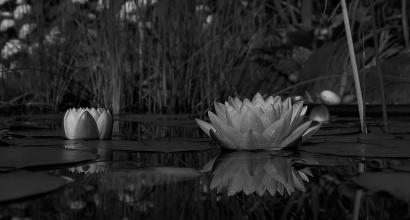Sastri’s students recall that he never came late for a class nor did he ever leave early. He would start off by dictating notes, which were precise and dense. Every now and then he would stop and elaborate on a point, giving explanations and clarifications. Owing to his partial deafness, he found it a challenge to listen to questions posed by students and so it appears that he cultivated the art of anticipating the question that the student would ask and answer it even as the question was being posed!
Sastri taught not only ancient history but also literary history, archaeology, epigraphy, and other subjects. He taught his students the method of history – how to collect data, how to organize the content, how to interpret the data, and so forth. Even to this day, his students praise the structural clarity of his presentation, the ordering of his lessons, his holistic vision of history, and his intellectual prowess. Some of his notable students are S R Rao, R Sathyanarayana, M Chidananda Murthy, B Sheik Ali, G Venkatasubbaiah, K Sripathi Sastri, A Sundara, E S Venkataramaiah, T V Venkatachala Sastry, H Y Sharada Prasad, Jayachamarajendra Wodeyar, S V Parameshwara Bhatta, A V Narasimha Murthy et al.
In 1949, for his D.Litt. degree, Sastri had submitted his published research papers in various languages. Prof. Radha Kumud Mukherjee, who had been assigned as the examiner gave his learned opinion on the value of Sastri’s writings by saying, “A D.Litt. degree is inadequate and insufficient for the magnitude and volume of research work done by Srikanta Sastri. It is a poor compensation to the author.”
Sastri was quite the workaholic, who woke up every morning by 4.30 and spent long hours—often in excess of fourteen hours every day—working and studying. And yet, he was far from unsocial. He had lasting friendships with littérateurs, scholars, Carnatic musicians, painters, theatre and film personalities, politicians, and statesmen. He was in touch with the likes of Jawaharlal Nehru and Subhash Chandra Bose through his disciple Y G Krishnamurthy. Writers like A N Krishna Rao (ಅ ನ ಕೃ), T R Subba Rao (ತ ರಾ ಸು), and Karlamangalam Srikanthayya had great reverence for Sastri and often consulted him. Sastri was a sort of de facto consultant for ತ ರಾ ಸು’s historical novels. Inspired by Srikanta Sastri, ಅ ನ ಕೃ created a character resembling the professor in his novel ಜೀವನದಿ.
During the shooting of the landmark historical movie ರಣಧೀರ ಕಂಠೀರವ, apparently there were a major confusion relating to some historical details. The writer G V Iyer along with actor K S Ashwath rushed to Sastri’s house to get clarifications. And it is no surprise that Sastri, who had himself edited a few grants of the 17th century king Narasarāja Woḍeyar, gave them the information they needed.
Sastri was extremely fond of Carnatic music and knew a lot of musicians; Veena Doraiswamy Iyengar, R Visveswaran, and others were his students. He was the President of the Varalakshmi Academy established by R Sathyanarayana. Apparently, when Sastri had a paralytic stroke and was bed-ridden in K R Hospital, the renowned violinist Mysore T Chowdiah played a ‘prayer concert’ in his house begging the almighty for his speedy recovery!
Srikanta Sastri – the Polymath
In the true Indian scholarly tradition, Srikanta Sastri was a consummate polymath with deep knowledge in a variety of subjects. And it wasn’t the hobby of the dilettante but deep mastery over all these subjects. Here are just a few examples.
The acme of Sastri’s scholarship was the editing, publication, and scholarly analysis of inscriptions such as – the inscription about Basavaṇṇa, the Arjunavāḍa inscription, the Goravūru grant of Ponnera-noḻamba, Guha’s Uttarakāśi inscription, Durvinīta Gaṅga’s Hebbaṭa inscription, two grants of Kaṇṭhīrava Narasarāja, the Belagutti records, etc. It was Sastri who competently took forward the tradition of John Faithfull Fleet and ranks alongside Ra Narasimhacharya and Lewis Rice in the field of epigraphy.
Owing to his partial blindness and deafness, Sastri was never able to make any sort of field visits and much of his mastery over archaeology was by means of study. He religiously maintained a photo scrap-book with cutting from the Illustrated London News and other periodicals. His treatise ಪುರಾತತ್ತ್ವ ಶೋಧನೆ is perhaps the first-ever work—and undoubtedly the best-ever—on the subject of archaeology in Kannada.
Sastri, a scholar who spent much of his time in the study of the ancient world and classical literature, was also surprisingly up-to-date about the happenings in the world around him. He wrote about the misdeeds of the British and contributed to the freedom struggle. He criticized Gandhi’s opposition to Subhash Bose in the 1939 Congress session. Sastri was deeply interested not just in national and international politics but also in political theory. He was one of the earliest to take up the study of geo-politics, an emerging field in the 1940s. Sastri was the inspiration for his student Y G Krishnamurty to write books about politics and his introductory essays to YGK’s books are noteworthy for their clarity of vision.
Sastri was a competent poet and littérateur. He composed poems merely for self-enjoyment and much of it is unpublished. After a trip to Hampi, he composed Pampāpati Pañcakam. His vṛtta-mālikā ‘Gaṇeśa-ṣaṭkam’ appeared in the Sādhvī newspaper in the mid-1920s. He also wrote a long poetical work titled Śrīkaṇṭheśvara-śatakam. Even when he was a BA student, B M Sri had read some of his compositions and told him, “You have a poet in you!”
Sastri warned that India’s legal system must not become an imitation of the British system but it should be shaped in a manner that aligns to the traditional Indian conception of dharma and justice; it must give importance to a nīti-based law that inculcates dharma. He realized that the emphasis must be on values and duties rather than on rights and entitlements.
To be continued…
References
1. A Votary of Truth – A documentary on Prof. S Srikanta Sastri
2. Ramaswamy, S R. A Tapestry of Pen-portraits. Bangalore: Prekshaa Pratishtana, 2020. ‘S Srikanta Sastri’ adapted into English by Hari Ravikumar, pp. 198–220
3. Śrīkaṇṭhayāna: The Collected Writings of Dr. S Śrīkaṇṭha Śāstrī. 2 Volumes. Eds. Sastry, T V Venkatachala and Narasimhamurthy, P N. Bangalore: Mythic Society, 2016
4. Śrīkaṇṭhikā – Dr. S Srikantha Sastri Felicitation Volume. Mysore: Geetha Book House, 1973 (on behalf of Dr. S Srikantha Sastri Felicitation Committee)
Acknowledgements
It is my pleasant duty to acknowledge the help and support of Nadoja Dr. S R Ramaswamy, Shatavadhani Dr. R Ganesh, and Jayasimha K R. I have greatly benefited from the excellent website about Srikanta Sastri maintained by his family members (www.srikanta-sastri.org/). My thanks are also due, to the Gokhale Institute of Public Affairs and Prekshaa Pratishtana.










































